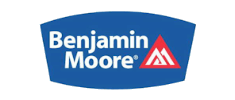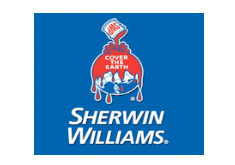Textured Ceilings
Overview
Ceilings are notorious for showing flows. Light shining across that large, uninterrupted surface, accentuates every pockmark in the dry wall mud and every little ridge left by the paint roller. The usual way to mask this is to spray on acoustical popcorn texture. Most prefer the go with a knockdown texture on most ceilings, whether they’re new drywall, old plaster or a repaired ceiling of any type. What’s great about knockdown texture is that it not only hides imperfections but also creates a much more subtle look than behavior textures. A typical ceiling doesn’t take very long to complete and it’s a relatively inexpensive process. Don’t hesitate to contact Edmonton Painters Pro and we will be pleased to answer all of your questions.
Preping the Work Area
We will start by removing all of your personal items from the room, as well as any floor covers, wall hangings and light fixtures. Depending on the work involved, we will either cover the floor with rosin paper or drop clothes as this will make the process easier by rolling up the entire mess at the end of the job and drop it a garbage bin. We will overlap rosin paper and tape the seams to ensure no debris finds its way onto your floors or walls.
Next, we will mask the top edges of the walls with 1 – ½-inch of masking tape. Press the top half of the tape, firmly in place and in straight line along the top of the walls, just under the ceiling line. To the bottom half of the tape, adhere inexpensive 0.8 mil plastic drop clothes, “bagging” the entire room.
Paint Now or Later
We can apply knockdown texture to bare drywall and paint over it at a later time. But I prime and paint the ceiling first, then texture it and leave the area unpainted. The slight contrast between flat white ceiling paint and the off-white texture gives ceilings a nice dimensional depth. As an added bonus, we don’t have to sweat lap marks or flash marks when painting. The texture will hide all of those imperfections. Depending on the humidity, the ceiling can be ready to texture in as little as a few hours after painting.
Mixing up the Mud
Typically, when we mix up mud, we aim for the consistency of pancake batter and we always mix more than we need. It’s better to waste some mud, than run out before completing the job.
In addition, depending on the size of the area to be covered, we add about two inches of water to a clean two gallon pail and mix unaggregated texture powder into it. For knockdown texture, we never use mix that contains aggregate. We then continue to add water and powered until we have a more max than we need. We can tell you that approximately 1-1/2 gallons of mix is adequate for a ten by fourteen room.
As a crucial step, we will set the mix aside for about fifteen minutes in order to allow for water absorption. Otherwise, the mix will thicken in the hopper, it won’t spray properly and we’ll have to clean it out and start over. After this period of time, we will add more water and remix. The final consistency should resemble pancake batter. A mix that’s too thick won’t spray as well, so it’s always better to error toward slightly thinner consistency.
Testing then Spraying
Once we fill the hopper, we will spray a test pattern along the wall plastic. Quite often, completing a nock down project often requires having to relearn the feel of the spray gun. Our goal is to achieve roughly forty percent coverage. A knockdown finish requires leaving about sixty percent open space so that the splatters can be knocked down to create the desired effect. We use a coarse or medium tip for splatter applications.
After we perform a test run, we spray the ceiling. Spraying an average-size room takes about fifteen to twenty minutes. We hold the gun about fifteen inches from the ceiling and work in three foot block squares, while avoiding any overlap where these blocks meet.
While in the application process, we must keep the spray gun in motion to avoid spraying any area too heavily. Knocking down the splatters later will greatly increase the area that the mix covers. Naturally, we go with a lighter coverage than heavier.
Typically, if a given spray is larger than two hundred-twenty five sq. feet, we only spray and knock down half the ceiling at a time. This prevents the mix from drying before it can be knocked down.
Knocking Down the Splatter
Spoiling the knockdown process can only happen in one of two ways: too much splatter coverage and waiting too long before knocking down the splatters. When the splatters become too dry, we just can’t knock them down smoothly. So we have to keep a careful eye on the sheen of the splatters. As soon as the wet shine disappears from the first area sprayed, usually ten to fifteen minutes, we must get moving to complete the job.
Knocking-down the splatter typically requires the use of an eighteen inch rubber squeegee-style-down knife. Although we have metal versions of this tool, we find it easier to use a rubber blade. Here’s how we perform this part of the task:
- We work across the ceiling in course, overlapping each course by approximately three inches.
- We complete each course in a couple of passes. We start at one edge of the ceiling and stop a few feet from the wall. T hen drag inward from the opposite edge to finish the course.
- Work across the ceiling joists. If you drag parallel to the joists, the knife might bridge troughs between joists, leaving some splatters untouched.
- We keep the knife in a straight line. Any swerves or curves in the line of travel will be noticeable on a finished ceiling. During this process, we run right over any electrical boxes and recessed lights, not around them.
- With every pass, we will wipe any mud buildup, with a damp rag, keeping the knife as clean as possible.
- That’s about it. By the time we’re done cleaning up our tools, the texture should be dry enough to remove any tape and plastic from your walls.
Contacting Edmonton Painters Pro
Contacting Edmonton Painters Pro, couldn’t be easier. We have a number of easy and convenient contact options available, so if you have any questions, don’t hesitate to reach out to us for immediate assistance and we will be pleased to help.
Service Locations
Edmonton, Crestwood, Riverdale, Garneau, Ritchie, Highlands, Westmount, Oliver, Glenora, Strathcona,
![]()
painters, residential, commercial, wallpaper, nock down, textured ceilings, varnish finishing, water damage,
stain removal, mold removal, paint restoration, drywall service, feature walls, taping and mudding, plaster repairs









